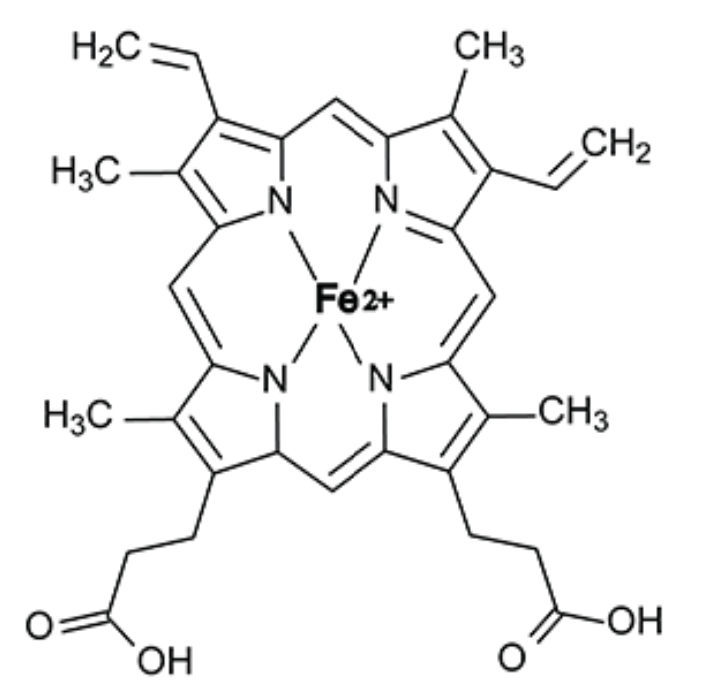> 1 Figure
4
Not only the quantity of trace minerals in foods is to be considered but also their bioavailability: it is the proportion that is absorbed and utilized through normal metabolic pathways. One key nutrient such as iron is known to strongly depend on whether it is from plant- or animal-origin. Heme iron (the iron in hemoglobin and myoglobin present in meat, seafood and fish) is approximately 5 times better absorbed than non-heme iron of most plant foodstuffs. Non-heme iron is also found in animal products such as eggs, milk/dairy and animal flesh. Hemoglobin is a protein in red blood cells that carries oxygen from your lungs to all parts of the body. There are four iron atoms in each molecule of hemoglobin, which accordingly can bind four molecules of oxygen. Iron is also part of myoglobin, a protein that carries and stores oxygen specifically in muscle tissues.
Without enough iron, there are not enough red blood cells to transport oxygen, which leads to fatigue. Iron is important for healthy brain development and growth in children, and for the normal production and function of various cells and hormones. Iron is a nutrient of public health concern especially for adolescent and premenopausal females. At the opposite, excessive consumption of red and processed meats seems to increase the risk of colorectal cancer possibly due to the involvement of iron in oxidative stress.

